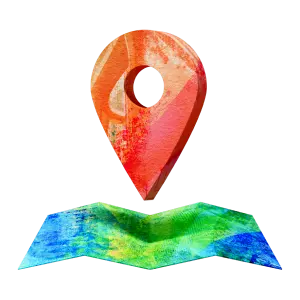Poolse zloty (PLN)
De Poolse złoty is de officiële munteenheid van Polen. De meest populaire valuta om de złoty tegen om te wisselen is de euro. De valutacode voor de złoty is PLN en het bijbehorende symbool is zł. De złoty's omrekenfactor gaat tot 6 significante cijfers. Het is een fiduciaire valuta.
Muntsoort
Poolse zloty
Valutasymbool
zł
PLN wisselkoers
| USD | EUR | GBP | INR | CHF | KRW | NOK | CZK | |
|---|---|---|---|---|---|---|---|---|
| Van PLN | 0.24821 | 0.23727 | 0.19943 | 21.42600 | 0.22507 | 356.46400 | 2.79158 | 5.95145 |
| Naar PLN | 4.02885 | 4.21460 | 5.01431 | 0.04667 | 4.44306 | 0.00281 | 0.35822 | 0.16803 |
Pas op voor slechte wisselkoersen.Banken en traditionele aanbieders maken vaak extra kosten, die ze dan weer doorberekenen aan jouw in de vorm van een commissie in de wisselkoers. Onze slimme technologie maakt ons efficienter - wat betekend dat jij een geweldige wisselkoers krijgt. Elke keer weer.
| Naam | Poolse zloty (PLN) |
|---|---|
| Symbol | zł |
| Minor Unit | Grosz (1/100 of a Złoty) |
| Minor Unit Symbol | gr |
| Notes Freq Used | zł10, zł20, zł50, zł100, zł200, zł500 |
| Coins Freq Used | 1, 2, 5, 10, 20, 50 groszy, zł1, zł2 |
| Central Bank | National Bank of Poland (NBP) |
| Users | Polen |
Facts Table for Poolse zloty (PLN)
The Polish Zloty serves as Poland's official currency, with PLN as its currency code and zł as its symbol.
Derived from the Polish adjective 'golden' in its masculine form, the word złoty has a close connection to the guilder, while its subunit, the grosz, is rooted in the groschen, akin to the English term 'groat.' It officially entered circulation on 28 February 1919, replacing its precursor, the Polish marka, and began circulating in 1924. The exclusive entities authorised for the production of złoty coins and banknotes are the Polish Security Printing Works (PWPW), established in Warsaw on 25 January 1919, and Mennica Polska, founded in Warsaw on 10 February 1766.
Due to inflation in the early 1990s, the currency underwent a redenomination. Thus, on 1 January 1995, a revaluation occurred, where 10,000 old złoty (PLZ) equated to one new złoty (PLN). As a member of the European Union, Poland is bound to embrace the euro upon fulfilling specific criteria, although no definite timeline exists for meeting these conditions.
The official currency symbol, zł, is constructed from the lowercase z and ł, representing the initial letters of "złoty." This symbol lacks a single representation in the Unicode Standard, although it was previously present in Polish typewriters and computers. The subunit symbol, 'grosz,' is depicted as lowercase gr.

Polish Złoty and the European Union
Upon Poland's accession to the European Union in May 2004, one of the commitments involved eventually adopting the euro, contingent upon meeting requisite stability standards. While discussions about entering the Eurozone have been significant, amendments to article 227 of the Constitution of the Republic of Poland would be necessary beforehand. Public sentiment, reflected in recent surveys commissioned by the European Commission, indicates approximately 60% support for adopting the Euro.